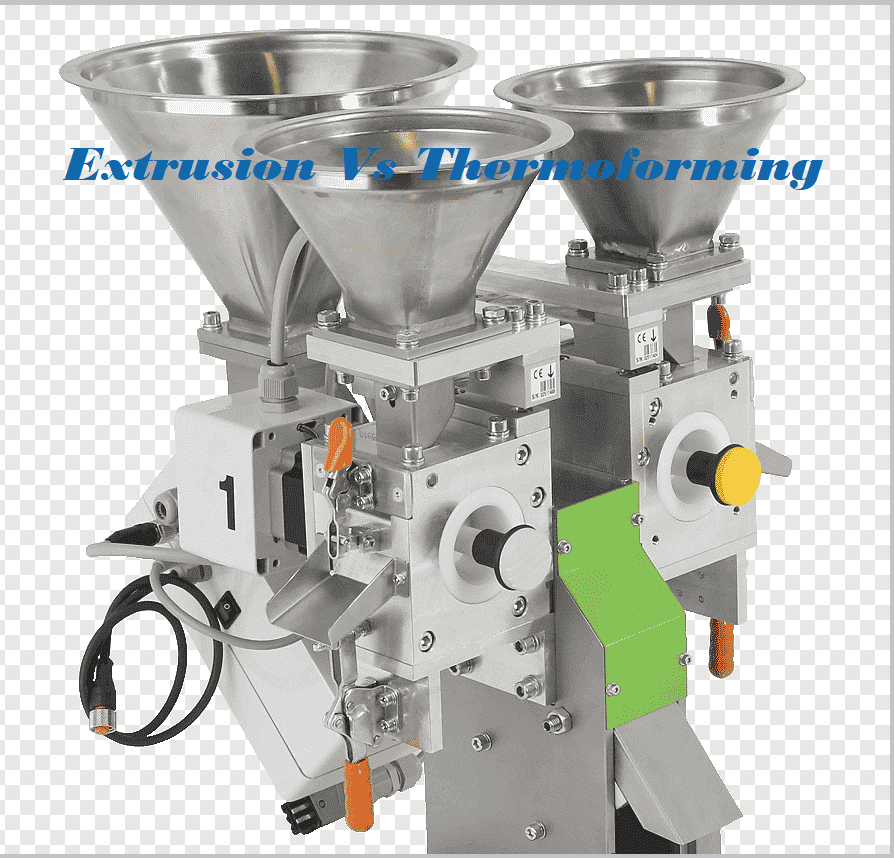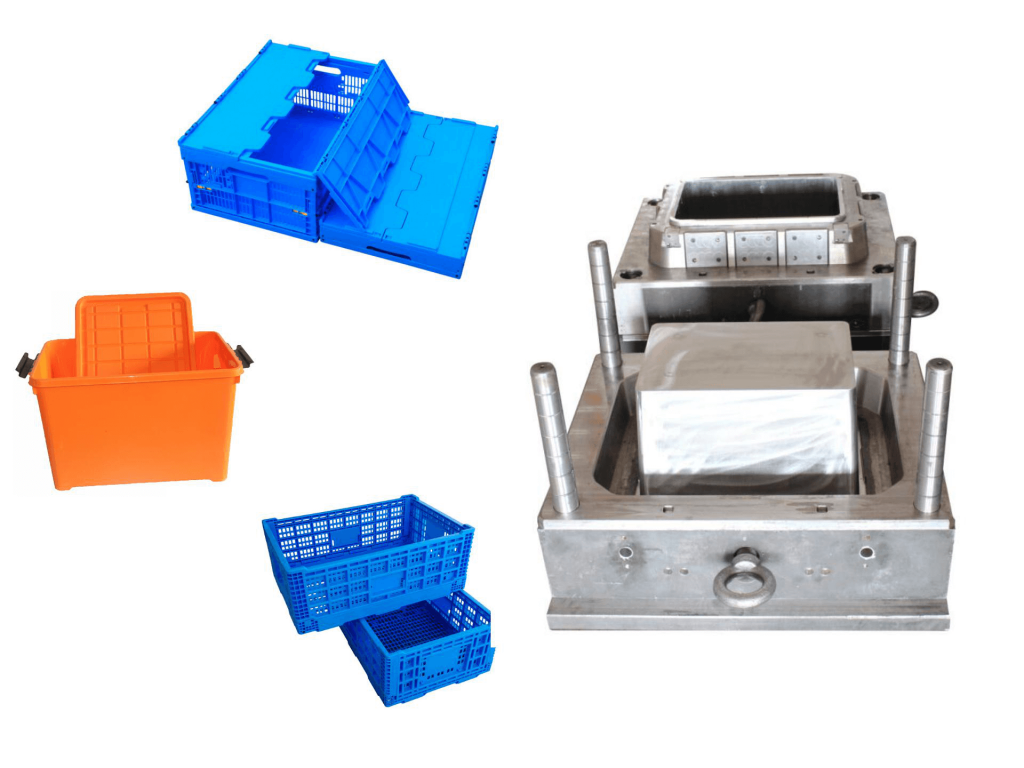Fabricante de peças moldadas de plástico: diferença entre termoformação e extrusão
Fabricante de peças moldadas de plástico: moldagem por extrusão x termoformação
Um fabricante de peças moldadas de plástico oferece diversidade quando se trata de técnicas de moldagem. Além dos métodos de moldagem populares, como injeção e rotação. Existem duas técnicas de moldagem mais eficazes: termoformação e moldagem por extrusão.
Both of these techniques offer a number of benefits. They come with their advantages and disadvantages. Although, both techniques offer to end up moulding plastic, but the way they go about it is different. In this article, we are going to talk about the difference between these two techniques.

What a Plastic Molded Parts Manufacturer has to say about these techniques?
Having a basic understanding of both these techniques would help you make a better decision when it comes to choosing a plastic moulding method for your custom plastic parts.
Extrusion Molding
The process of extrusion molding is similar to that of injection molding. However, there is a slight difference, it tends to produce a long continuous shape. In addition, extrusion molding does not use a mold, on the contrary, it uses a die.
Para fazer as peças, a técnica espreme a matéria-prima quente por meio de uma matriz personalizada. Para ficar mais fácil de entender, podemos dizer que é como apertar play Doh por meio de um buraco em forma. Ao contrário de outras técnicas de moldagem que colocam resinas em um molde, a extrusão o coloca diretamente na forma da matriz.
Portanto, aqui a matriz em vez do molde determina a forma do produto desejado.
O processo passo a passo
Etapa 1: O material plástico bruto, incluindo pó, pellets, grânulos, é colocado em uma tremonha, depois o material é deslocado para uma extrusora. É uma longa câmara cilíndrica quente. Para mover o material pela câmara, ele usa um parafuso giratório.
Existem algumas extrusoras com mais de um parafuso rotativo.
Step 2: There is a spinning screw operating, the raw material flows from the hoppers onto this spinning screw. For the operation of the spinning screw, it uses a horizontal barrel.
Step 3: Since every material has different properties, therefore the heating for every raw material is different. The temperature requirement of a certain material is taken into account. To form the desired shape, the molten plastic is passed through the die.
It is the small opening present at the end of the heated chamber.
Etapa 4: For the cooling purposes, the plastic extruded from the die is placed onto a conveyor belt. A plastic molded parts manufacturer can use either air or water for the cooling down purpose.
The process is similar to that of the injection molding. However, instead of the mould, here you would be using a die.
Step 5: It is important to design the die for every individual plastic profile. This would ensure the smooth flow of plastic from the cylindrical profile to the extruder. Thus, taking the final shape.
To ensure that the end product offers integrity, consistency in the flow is imperative.
Extrusion Moulding Common Use
If you want the parts to have a cross-sectional profile, use the extrusion moulding technique. For instance, PVC piping, hoses, and the straws. There is no need for the parts to be round. However, it is vital for them to have the same shape along the part’s length.
When you compare the cost of extrusion molding to other moulding process, you will realize that it is cost-efficient. Mainly because of the die and the machine are simple. They lack the complexity that is innate in molds and machines of other moulding processes.
Since it lacks complexity, thus it has its limitation. You can create only a number of products via this particular technique.
Best Uses of Extrusion Molding
You can design and manufacture parts that are simple and have a fixed cross-sectional profile. For instance, products are either have a circle shape and square.
Produtos Comuns
- Plastic Gutters
- PVC pipe
- Plastic Decking
- Straws and Hoses
Thermoforming
A termoformação é um processo de fabricação eficaz no qual a folha de plástico - termoplástica - é aquecida até a temperatura de formação. A razão para fazer isso é permitir que a folha tenha a forma específica no molde.
Mais tarde, é aparado para criar produtos. A grande vantagem das chapas termoplásticas é que elas vêm em uma ampla variedade de materiais, espessuras, acabamentos e cores.
Para atingir o produto final, a termoformação não responde a um determinado tipo de processo ou molde. Pelo contrário, utiliza múltiplos moldes junto com os diferentes processos para adquirir a forma desejada. Para produtos 3D, geralmente é um único molde 3D.
Plastic Mould Parts Manufacturer uses aluminum for the creation of these 3D molds. Since the technique uses less pressure, therefore, it is possible to create parts or components at a lower rate.
Types of Thermoforming
There are two basic types of thermoforming: pressure forming and vacuum forming. Both techniques yield effective results, but there is a slight difference between the two.
Vacuum forming uses pressure and heat to draw the plastic into the respective shape. It first heats the sheet and then places it into the mould. To ensure that the plastic takes the final shape, it is manipulated using the vacuum.
Pressure forming, on the other hand, is similar to a vacuum. However, it has the additional benefit of pressure. With pressure, it is possible to achieve greater details and texture. Therefore, if you have to choose, between the two, pressure forming is the better choice.
Thermoforming Common Uses
Thermoforming, especially the tin-gauge is extremely popular for producing trays blisters, containers, disposable cups, clamshells, lids among other things. It is common among the food as we ass the general retail industry.
For something more sturdy and bigger, manufacturers go with the thick-gauge thermoforming. For instance, it is an effective technique for refrigerator liners, vehicle doors, utility vehicle beds, and dash panels.
Cost and Time of Production
A termoformação pode ser uma técnica de moldagem de plástico barata; no entanto, isso leva tempo. Em média, você precisaria de cerca de 8 semanas para o molde termoformado ficar pronto. Depois que o molde está pronto, a produção começa.
A fase de fabricação é mais rápida. No entanto, tenha em mente que o custo da técnica depende muito do tamanho da peça do componente. Por exemplo, se você quiser moldar peças de pequeno tamanho, isso custaria $ 20.000 por ano.
Considerando que, a mesma quantidade de peças com um tamanho maior custaria US $ 50.000 por ano.
Você também pode verificar nosso artigo sobre como reduzir o custo por unidade.
Fabricante de peças moldadas de plástico que oferece os seguintes benefícios
Aqui estão os benefícios da termoformação e da técnica de moldagem por extrusão.
Vantagens da moldagem por extrusão
Alta velocidade, alto volume
The process is cost-efficient when you want to manufacturer a high number of parts or components. It can also produce parts quickly.
Low Cost
When you compare extrusion moulding to a number of other moulding techniques such as Rotational, you will find it affordable. What more is that it allows the facility to reuse the leftover material, reducing not only the waste outcome but also the cost.
The machinery is robust, it can operate continuously. The manufacturers can enjoy a 24 hours-a-day manufacturing period.
Flexibility
The products come with consistent cross-section; however, it offers considerable flexibility. You can enjoy a number of shapes, sizes, and textures with the extrusion moulding process.
Thermoforming Benefits
Adaptability
Thermoforming offers a number of benefits, design adaptability being on top. The technique offers the flexibility of incorporating all consumer design needs.
Fast Turn-Around Time
Of course, for full-on production, the mold does take some time. However, in the case of the prototype, it can deliver effective results within no time. It offers a fast turn around time.

Material Optimization
With Thermoforming it is possible to optimize materials in order to ensure lower tooling costs as well as cost-effective manufacturing.
Moreover, the technique offers a number of other benefits. It results in a very aesthetically pleasing component or part. The plastic molded parts manufacturer offers paintable plastics, colored plastics, along with several other customization options.



